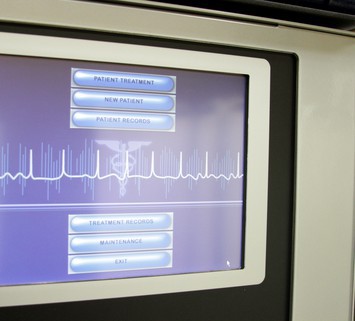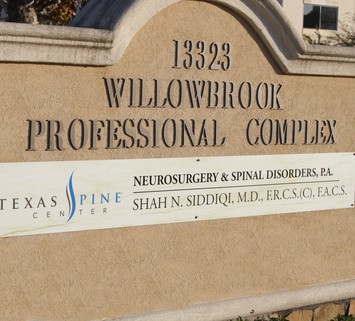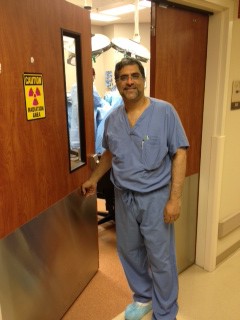For patients experiencing significant neck pain or muscle numbness, the multitude of possible root causes for the pain can make it difficult to determine the pain's source. Bulging discs and herniated discs are common causes of spinal pain, but you may be wondering about the difference between a bulging disc vs. herniated disc. This article will discuss the differences between the two conditions.
Spinal Discs
The vertebral column is the supporting structure that holds up the spine and head and serves to protect the spinal cord and its nerves. The intervertebral discs act as cushions between the vertebrae to prevent them from grinding against each other, absorbing the stress and pressure of the bones as you move.
These intervertebral discs are composed of two parts—annulus fibrosus and nucleus pulposus—which act as spongy shock absorbers. The annulus fibrosis functions as a tough outer layer that protects the soft, gel-like nucleus. They connect the vertebrae together and give the spine the ability to flex, extend, bend, and rotate.
What is a Bulging Disc?
A bulging disc is created from active trauma to the spine, and it can be considered one of the most common kinds of disc injuries. Injuries, poor posture, improper form for lifting heavy items, and the wear-and-tear of repetitive movements are common causes of a bulging disc. People who pursue active and physically demanding lifestyles are at the highest risk for this type of injury.
As time ages the discs and overall spine, the spinal discs become compressed and flattened as they become dehydrated and stiffened. The outer layer of the disc naturally weakens, allowing for the nucleus pulposus—the inner jelly-like part of the disc—to sag against the annulus.
The nucleus of the disc can push against the annulus and force the outer layer of the annulus to protrude outward. When this occurs, the outer, fibrous portion of the disc “bulges” into the spinal canal. Depending on the cause, the spinal bulge can happen in one or several discs.
The spinal disc bulging in the spinal canal is a normal part of the aging process. As we get older, the soft gel-like part of each disc between the vertebral bones hardens and wanes. Usually, there will be a series of bulging discs rather than one, and for some people, a bulging disc can cause severe pain. If the discs are compressed into a nerve root or are causing inflammation, the pain can be significant.
What is a Herniated Disc?
A herniated disc—commonly called a slipped disc or ruptured disc—happens when the soft, interior nucleus of the spinal disc penetrates beyond the annulus, creating a tear in the disc’s tough exterior. The jelly part of the nucleus can leak through the tear and potentially press on spinal nerves and cause sciatic nerve pain. Herniated discs often stem from bulging discs that have worsened over time, but it is possible to experience an immediate disc slip from an acute injury.
A ruptured disc is one of the most common reasons for neck, back, and leg pains. This type of injury often occurs in the lower spinal area, though it can happen in any part of your spine. The location of the ruptured disc affects the possible symptoms, such as numbness, neck pain, or weakness in the limbs. Each disc is involved with a specific nerve root, and this can affect walking or the body’s range of motion. In some cases, a ruptured disc may not cause pain at all, so some patients may not realize their spine is injured.
Like a bulging disc, herniated discs can develop with age, but people who are particularly active, older, or strained during improper lifting are at high risk for experiencing a slipped disc.
The Key Differences: Bulging Disc vs. Herniated Disc
Although both injuries can cause similar pain in the back, neck, and limbs, they still have distinctive differences that set them apart from one another.
The herniated disc involves a complete tear or rupture of the annulus and the subsequent leakage of the inner part of the disc. The bulging disc refers to the nucleus pushing against the annulus, but not emerging out of the disc’s exterior. The tear in the exterior serves as one of the most distinguishing differences between the two injuries.
Furthermore, the symptoms of a bulging disc oftentimes go unnoticed until the symptoms become more severe. In the event of a bulging disc, patients may neglect seeking help until the pain has reached an unbearable level. On the other hand, the symptoms of the herniated disc appear immediately, manifesting as acute pain in the body.
Seeking Medical Help
It is recommended to seek a medical professional—a spine surgeon—to determine if you have a herniated or bulging disc. A physician will perform a physical exam and examine your medical history to diagnose you with a spinal disc issue and may suggest physical therapy or other conservative care methods as a solution. They may use imaging tests, like X-rays, CT scans, MRIs, and a myelogram, to rule out any other conditions or nerve tests, like electromyography, if there are other nerves affected by the injury.
How Texas Spine Center Treats These Conditions
For patients seeking more information, a second opinion, and a board-certified neurosurgeon they can trust, Texas Spine Center is the solution. Dr. Siddiqi and his team of spine care professionals specialize in minimally invasive surgical techniques. Schedule an appointment on our website to explore your pain relief options with the experts!



